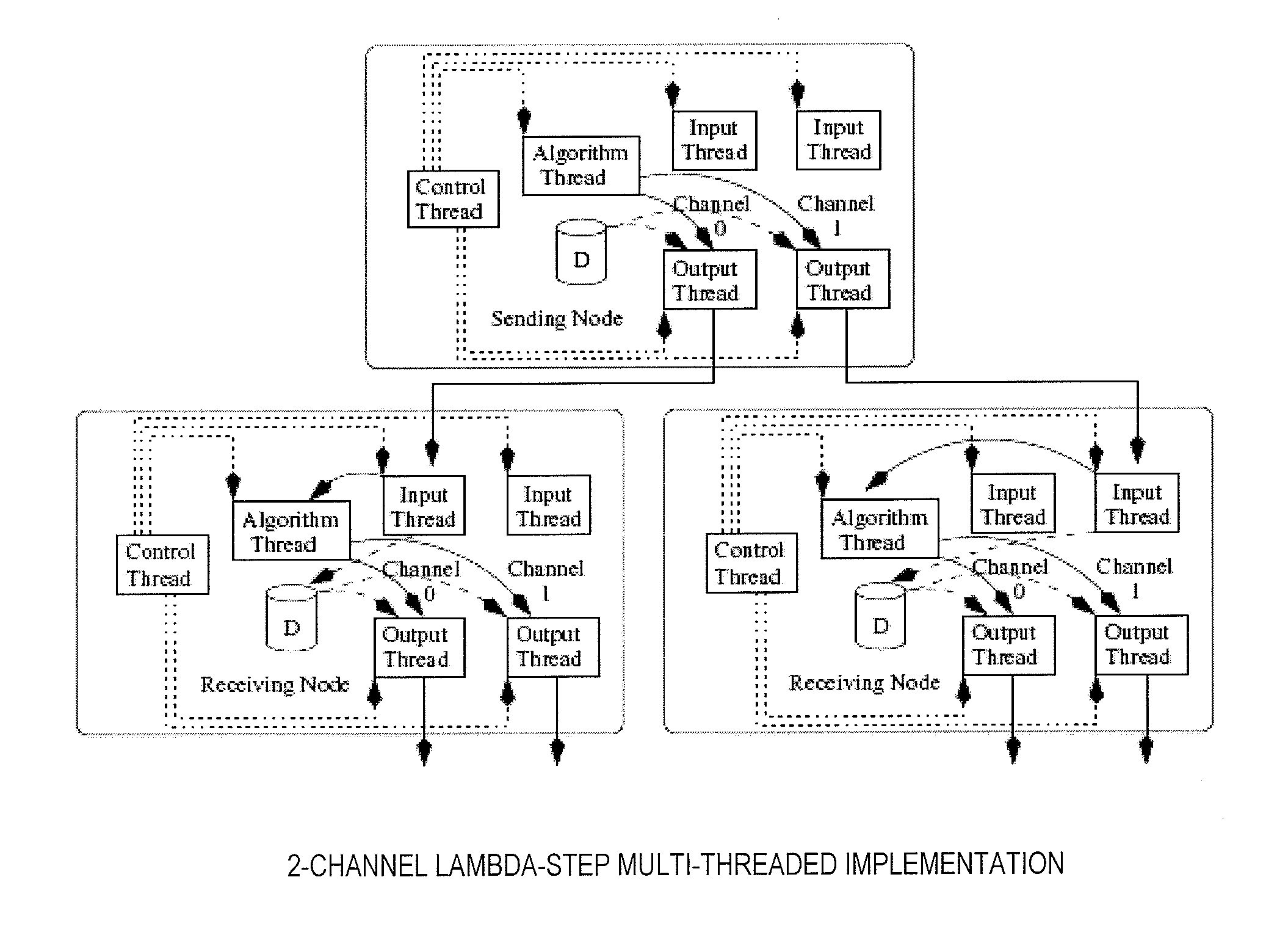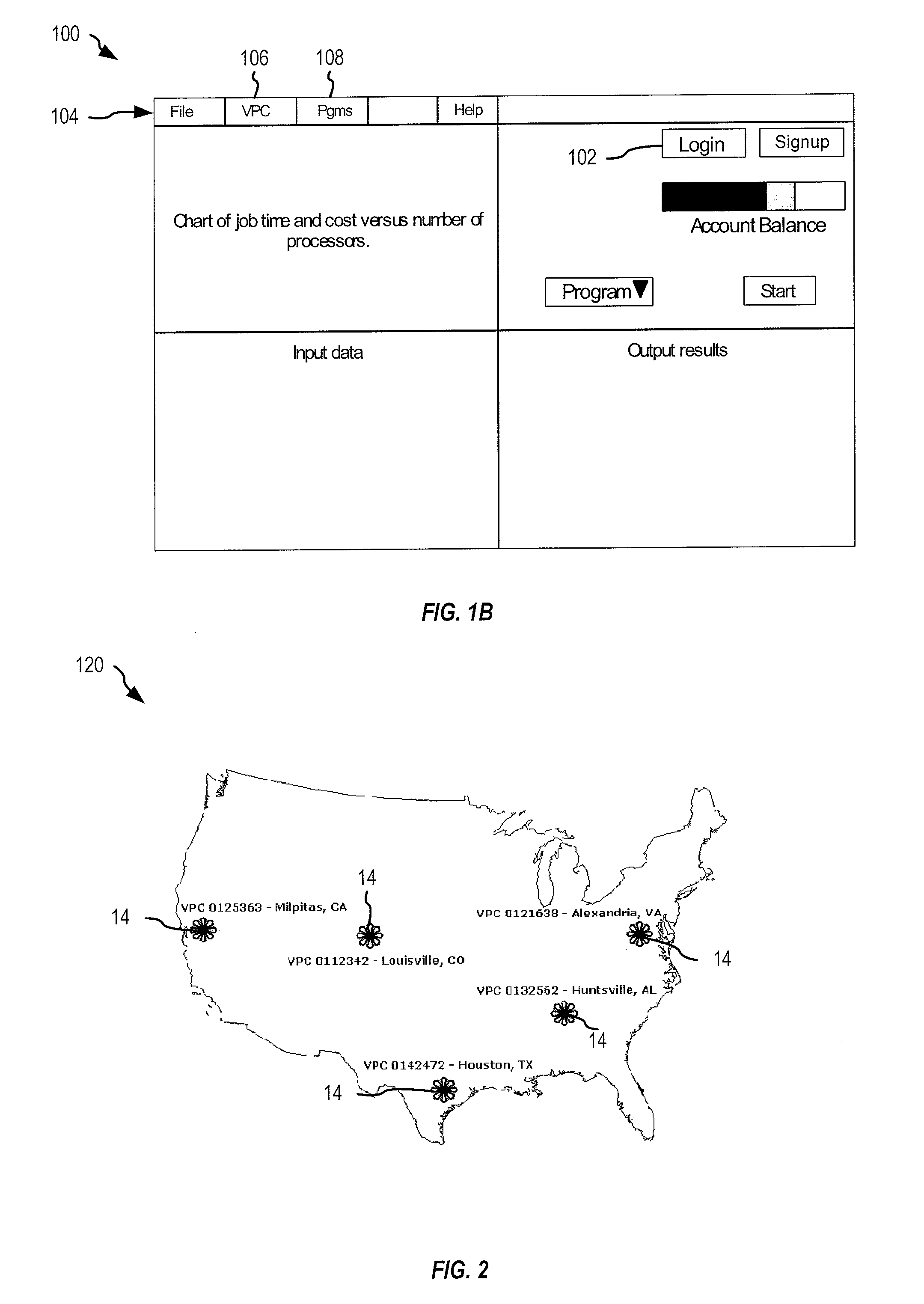System And Method For Accessing And Using A Supercomputer
a supercomputer and supercomputer technology, applied in the field of methods for can solve the problems of not providing significant user interactivity in the current method of accessing and using clusters of supercomputers, not giving any control over the execution of jobs, and not providing significant user interactivity
- Summary
- Abstract
- Description
- Claims
- Application Information
AI Technical Summary
Benefits of technology
Problems solved by technology
Method used
Image
Examples
example 1
1 Transmission Node
[0297]FIG. 42 shows a network of nodes in an initial state 2020, where only one copy of the code is stored on a node 2022 within the network. The transmission may be better served using a broadcast mechanism. Node 2022 contains the code and the locations of all other nodes in the network. Other nodes 2024, 2026, 2028 and 2030 do not contain the code.
[0298]FIG. 43 shows the state of the network of FIG. 42 after one time unit 2040. Node 2022 has the code and is in the CT-transmit state after the first time unit; node 2022 transmits 2042 the code to node 2024.
[0299] In the second time unit 2060, shown in FIG. 44, an association is formed with node 2024 and node 2026 is placed into I-inactive state. A node in the I-inactive state that is contacted by a node in the CT-Transmit state will compare its association size. The third time unit 2080 is shown in FIG. 45 and the fourth time unit 2100 is shown in FIG. 46.
[0300] By time fifth unit 2120 as shown in FIG. 47, nod...
example 2
2 Transmission Nodes
[0301] This example shows how these rules allow multiple transmission nodes to select the transmission node that should become the AA-List node.
[0302]FIG. 49 shows one exemplary network at a first time unit 2200 with two nodes 2202 and 2204 containing the code and the same list of available nodes in the network. The available node lists in nodes 2202 and 2204 each includes nodes 2206, 2208 and 2210 and the other transmission nodes 2204 and 2202, respectively. Since the transmission nodes randomize their node lists they can start acquiring their associations. A second time unit 2220 is shown in FIG. 50, where node 2202 acquires 2222 node 2206 and node 2204 acquires 2224 node 2208. FIG. 51 shows a third time unit 2240 where node 2202 acquires node 2210 and node 2204 attempts to acquire node 2206. Since node 2206 is already in an association, the association size is compared and nodes 2204 and 2208 join the association of node 2202, as shown in the fourth time uni...
example 3
Homogeneous 1-Channel Agents, 1 Home Node Goal
[0316] For the first example, the environment is set to produce a large number of C nodes and one H node. FIG. 55 shows one exemplary environment at a first time unit 2400 and having ten undifferentiated homogeneous nodes, each with a single communication channel, labeled 0 through 9, and an AA list node 2402. The initial state of each of these nodes is given in Table 3. Example 3, Initial States. The maximum association size is set to seven and the system quiescence wait time is set to three.
TABLE 3Example 3, Initial StatesNode #State0I-active1I-active2I-active3I-active4I-active5I-active6I-active7I-active8I-active9I-active
[0317] The number of nodes that can access the AA List is limited to one. FIG. 56 shows the environment of FIG. 55 at a second time unit 2240, where node 4 is the first to access 2442, 2444, AA list node 2402. It then transitions to T-init state, as shown in Table 4. Example 3, Time Unit 2 States.
TABLE 4Example 3,...
PUM
 Login to View More
Login to View More Abstract
Description
Claims
Application Information
 Login to View More
Login to View More - R&D
- Intellectual Property
- Life Sciences
- Materials
- Tech Scout
- Unparalleled Data Quality
- Higher Quality Content
- 60% Fewer Hallucinations
Browse by: Latest US Patents, China's latest patents, Technical Efficacy Thesaurus, Application Domain, Technology Topic, Popular Technical Reports.
© 2025 PatSnap. All rights reserved.Legal|Privacy policy|Modern Slavery Act Transparency Statement|Sitemap|About US| Contact US: help@patsnap.com



